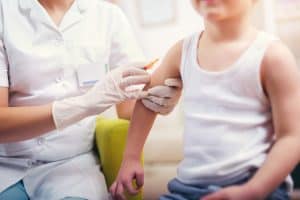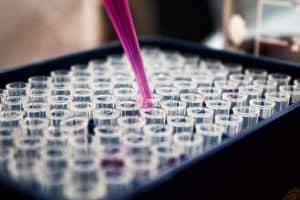EMA: Aligning regulation with the lifecycle of medicines
pharmafile | November 30, 2009 | Feature | Research and Development | EMA, EMEA, Thomas Lönngren, regulatory affairs
The European Agency for the Evaluation of Medicinal Products was set up in 1995 in London’s Docklands, an isolated eastern area of the city which was then still shaking off its past image as a run down docks.
Nearly 15 years on, the Docklands area is now a vital part of the landscape, rivaling the more centrally located City as London’s financial district.
Still located in offices a stone’s throw away from the skyscrapers of Canary Wharf, the European Union’s medicines regulator has undergone a similar transformation. Now renamed the European Medicines Agency (EMA), the agency has now surpassed all national agencies as the lead regulator for Europe, and has continued to take on new responsibilities in response to the changing face of medicines.
Thomas Lönngren became head of the agency in 2001, and has since overseen its transformation into a regulator with a stature similar to that of the US Food and Drugs Agency (FDA).
For a change Lönngren is not in London, but back in his native Sweden, in Stockholm, to discuss the latest developments at the TOPRA industry regulatory affairs conference.
Lönngren says the EMA underwent ‘Quantum-leap’ changes during the period from 2004 to 2007 – the enlargement of the European Union to 27 Member States, the introduction of major new EU pharmaceuticals legislation and creation of scientific committees for herbal and paediatric medicines.
The majority of Europe’s existing medicines are still authorised nationally, but most genuinely novel medicines get approved or rejected by the EMEA.
Nevertheless, the EMA remains in some senses a ‘virtual’ agency in that it relies on the expertise of the national medicines agencies from member states. Now Lönngren is overseeing a thorough re-organisation of the agency which should be completed by 2010.
“The EMA organisation has barely changed since 2001 when I joined,” he says. “But from then up to now, the responsibilities of the organisation have increased greatly.”
The aforementioned EU expansion, and new paediatric and advanced therapies legislation have seen the number scientific committees and working parties increase dramatically.
“Our headcount has risen from around 170 people in 2000 to 650 today. So all that meant it was time to review the organisation of the EMA. Even though it had been working quite well, we needed to look at how we were managing procedures and our staff.”
Plans for the reorganisation go back as far as 2006, when the agency began looking at how it could streamline its business processes.
“The first part was process improvement – in some areas we concluded we could simply improve without major reorganisation, but in other areas we decided we needed to restructure things. That was the second part of the exercise, and included input from all our staff, and was also extended to our scientific committees.
“The main issue was looking at the Human units and we looked at the lifecycle concept, because in the old organisation we had duplification across two big units. Now we have put those units together to avoid duplication and to give us greater consistency in the scientific advice and opinions for marketing authorisation, and also all the work for after a marketing authorisation. That is handled now under one organisational structure, whereas before it was separated in two.”
Does it reflect the changing nature of drug development?
“Yes, absolutely. There is more focus on specific processes like, for example, the scientific advice, where we have tried to re-build our organisation around the lifecycle concept to match how medicines move from pre-authorisation and into post-authorisation.”
Does this mean there will be greater continuity from the industry’s perspective?
“Yes, there will be more consistency over the lifecycle than before. Before you had one person handling it before the authorisation and another person for after authorisation, but now we will have continuity.
“Many of these ideas emerged from the annual customer satisfaction survey conducted via [industry association] EFPIA, in which the pharmaceutical industry’s desire for more consistency in the lifecycle was one of the most notable things. So that is what we have tried to achieve with this change.”
The creation of a new unit based around Patient Health Protection seems to be a reflection of ‘patient power’.
“Yes – the legislation in 2005 was clearly directing us to be more transparent and communicate with other stakeholders besides the industry – namely healthcare professionals and patients. Many of them now have places in the scientific committees and the management board.
“That also reflects how we are dividing the human medicines division into two parts – one dealing with marketing authorisation and follow ups and another dealing with the issue of safety of medicines, information and interaction with stakeholders. That way you have a better way of concentrating these resources.”
Does this reflect a separation into two distinct units, one for approvals and one for safety? There have been calls to divide regulators up this way to avoid conflicts of interest.
“I think you have to be very careful to draw that conclusion, because you have to understand the nature of the EMA. It is a co-ordinating agency, we are not really doing the scientific evaluation. We rely on the rapporteurs and the national agencies, so you can’t compare it with the organisation of a national agency, for example.
“The people who in charge of the pharmacovigilance and the people overseeing marketing authorisation happen to be in different units, but it doesn’t really represent a separation of these activities. Because the issue of pharmacovigilance is integrated into the CHMP, even though we have a pharmacovigilance working party. The EMEA’s role is to co-ordinate the work of these scientific committees and working parties in order to ensure consistency.
So to be clear, this reorganisation doesn’t reflect a change in view about the benefit/risk balance in the eyes of the EMA?
“No, that’s right it hasn’t changed. Because the CHMP still has the responsibility for pharmacovigilance in pre-authorisation and post-authorisation. In that sense, this reorganisation only represents how we structure the support for the scientific committees, that’s all.”
The agency’s five-year strategy plan, the 2010 Roadmap is now coming to a conclusion. What has it achieved?
“It has been a good instrument in order to generate a consensus. I think we’ve made very good progress, and we have delivered on more or less all the goals that we had originally identified.
“Of course in some areas we had hoped to be further developed, like for example the area of transparency. Maybe we should have had better progress in the area of public information to patients as wll.
“The European Commission has arranged for an independent evaluation of the EMEA, which will be conducted by management consultants Ernst & Young, and their report is due out in November. So their judgement of the EMA and the Road Map will probably be part of that report. That is an external evaluation of the agency, so we will wait and see what they say. My judgement of course is that we have made great progress!”
Lönngren has also announced plans for the agency to collect outcomes research. He makes it clear record that this is not a step towards the EMA expanding into health technology assessment.
“We have to point out that the EMA is not going into cost effectiveness. That is a political challenge, and not what I am talking about here.”
Rather, its future investment in more outcomes research is a response to the increasing use of conditional marketing authorisations.
“We are making hundreds of assumptions, and we are not really measuring whether these assumptions are having any kind of effect, so we are sure we need more research into that.”
Finally, your thoughts on two interesting areas: the withdrawal of Sanofi-Aventis’s weight loss drug Acomplia, and the planning and experience so far around the H1N1 pandemic vaccines. In terms of Acomplia, it was notable that this product was approved in Europe and eventually withdrawn, whereas it was never granted approval in the US.
“Why it was approved in Europe and why it wasn’t approved in the US was down to a question of timing. The company filed earlier in Europe and we made a decision earlier in Europe. [So by the time the FDA looked at it] there was more data for them to look at than we had had. You could speculate that if it had been filed with both agencies at the same time with the same data that we might have arrived at the same conclusion.
Would an electronic pharmacovigilance system have picked up those signals earlier?
“If you look at the decision on Acomplia – it wasn’t so much the side effects, but more the clinical reality of how the product was used which changed the benefit/risk profile.
“Because the side effects were well tracked in the system, there was no delay in building up a picture of it. I think this is an example of the contrast between a theoretical clinical trial where you can measure the effectiveness in a controlled situation, and when the product is launched you see the reality of clinical practice and how patients use it is quite different.
“When the clinical effectiveness of the drug was measured in the ‘real world’, that went down substantially for Acomplia because of the way it was used. The compliance of patients was an issue, and that changed the benefit/risk balance.”
Turning to the planning around pandemic vaccines, this seems like a remarkable piece of collaboration between regulators and industry.
It saw manufacturers submit for and gain approval of a ‘core pandemic dossier’ before a pandemic struck, based on a mock-up vaccine. Then when the H1N1 pandemic emerged, the pre-planned fast track approval came into play, with the mock up vaccine virus being replaced with the final pandemic vaccine virus.
“I am quite satisfied with how it has gone so far. We established the ‘core dossier’ concept in 2006, and planned for a very severe pandemic. But so far it is relatively mild – a level 6 according to the WHO.
“We did a rapid assessment using the core dossier based on limited data, and then authorisation was based on the positive opinion of the committee, so now these vaccines are out there. We have a very robust system in order to follow up on the efficacy and safety of the vaccines now the vaccination campaigns are starting in the EU, and there are further clinical studies to be conducted. So there will be more and more data coming in, which we will follow very carefully.
“We have to look at issues like the dosing and the safety in children. So there will be an intensive monitoring of the vaccines so we can be ready to change something, on the product label for example.
“But from our point of view we did a good job, we followed the core dossier approach and the rapid review and the rolling review. I think ‘so far so good’, but now the important part of the procedure is starting, so we have to follow up on the vaccines. I think safety is not the main focus, its more about ensuring efficacy, that the vaccines are really doing their job.
“A key thing to understand is that the number of people who will be affected compared to a normal seasonal flu is huge. And although the mortality rate is very low, young children and pregnant women are more vulnerable than compared to a normal seasonal flu where old people are most at risk. So there is a different target population here, and from the benefit/risk perspective, if we can vaccinate and provide a good protection, we will save lives.
“We have an extremely good track record when it comes to vaccines safety We have 20 years experience of seasonal vaccines and these new vaccines are more or less seasonal vaccines – the same manufacturer, the same virus more or less, and there is nothing new in this vaccine compared to others we have had. We don’t expect many side effects – there will be probably some very unusual side effects, but at a very low frequency.
“But the benefit of these vaccines is huge compared to the risk you are taking in not getting vaccinated.”
Can some of these practices and lessons learnt from working with the industry in this way be transferred to other areas?
“Absolutely, I think there is a lot we can learn from this. We have the possibility of using the rolling review technique; and the possibility of working with industry in a very speedy way, to speed up the whole procedure. We have had a very interesting discussion about the level of benefit/ risk and we made our decision based on assumptions.
“So there are a lot of lessons learned – but the process is not over yet, we are just moving into the next phase.”
THE EMA CHANGES
The life-cycle management of medicines for human use will be brought together in one Unit, Human Medicines Development and Evaluation, led by Patrick Le Courtois and responsible for the provision of advice during R&D, through to management of the review process and changes to products after they have been approved.
A new Patient Health Protection unit is to be created and led by Noël Wathion. This will contribute to patient health protection from the multiple perspectives of pharmacovigilance, risk and crisis management, patient and health care professional information, inspections (for both human and veterinary products), and appropriate regulatory compliance. The Unit will also be in charge of community procedures for both centrally and non-centrally authorised products in the Unit for Veterinary Medicines and Product Data Management, led by David Mackay
A single Sector will be created to oversee all areas of veterinary medicines – development, evaluation and maintenance of veterinary medicines, public and animal health (including safety) and veterinary regulatory affairs
Another new single Sector will be set up to manage product data and documentation related to applications for the whole agency; it will also be involved in the development of IT systems to support scientific business processes
Services within the unit for Information and Communications Technology will be rationalised led by Hans-Georg Wagner and within the administration unit, led by Andreas Pott.
The reorganisation began in early September 2009 with the reallocation of a number of staff members, and should be finalised by December.
The agency says there will be minimal changes in staff responsible for product applications (product team leaders/members and project managers) in order to avoid disruption to the operation of upcoming scientific committee meetings. Applicants and marketing authorisation holders will be informed in due course of any changes to the teams or staff handling their applications.
Thomas Lönngren
Thomas Lönngren is executive director of the European Medicines Agency (EMA) and has held the post since January 2001.
He qualified as a pharmacist from the University of Uppsala in 1976 and holds an MSc in social and regulatory pharmacy. From 1976-78 he was a lecturer at Uppsala University, Sweden. He served with the Swedish National Board of Health and Welfare from 1978-90 with responsibilities including herbal medicines, cosmetics, medical devices, narcotics and contraceptives. During 1982-84 he acted as senior pharmaceutical consultant for the Swedish International Development Agency’s health co-operation programme in Vietnam.
In 1990 he was appointed director of operations of the Swedish Medical Products Agency, later becoming deputy director-general of the Agency. He was elected an honorary member of the Pharmaceutical Society of Great Britain in 2003 and made an honorary fellow of the Royal College of Physicians in 2004.
Related Content

J&J gains positive CHMP opinion for Rybrevant for treatment of lung cancer
Janssen, a Johnson & Johnson (J&J) company, has announced that the Committee for Medicinal Products …

EC approves Pfizer’s Prevenar 20 to protect paediatric patients against pneumococcal disease
Pfizer has announced that the European Commission (EC) has granted marketing authorisation for Prevenar 20, …

EMA validates two applications for datopotamab deruxtecan for cancer treatments
AstraZeneca has announced that the European Medicines Agency (EMA) has validated to marketing authorisation applications …








